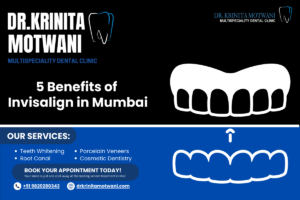Eating, speaking, smiling– all of them are common in the happy memories we share. But, there is something else they have in common. In fact, it would be impossible to do any of them right without your teeth. Unfortunately, most of us tend to take our teeth for granted. We are only aware of their importance when something goes wrong; you know how much a toothache can affect the quality of your life.
Every dentist in Mumbai can agree on one thing most people take their teeth for granted. However, doing that does not just affect the health of your teeth, but it dims the happiness in your smile and is actually detrimental to your overall health. By understanding more about your different types of teeth and the purposes they serve, you can care for them better.
Time to ask yourself, what do you know about your teeth? Read on to get to know your pearly whites a little better with the Best Dental Clinic In Mumbai.
4 Types of Teeth
Of course they all look and feel similar, but did you know that adult humans have four different types of teeth? Moreover, each of them serve a different purpose too! Here are some more interesting facts about your different kinds of teeth.
Incisors
The term incisor comes from the Latin word incidere which means “to cut”. The purpose of your incisors are exactly what this name suggests. Biting into food and cutting it into small pieces. They are flat with a sharp edge and are sometimes referred to as anterior teeth too. All humans, both adults and kids included, have eight incisors. Your four central incisors are located at the front of your mouth on either row with a lateral incisor on each of their sides.
Unlike some other types of teeth that are detailed below, even a child with a full set of primary teeth will have all eight incisors. In fact, your incisors are the first primary teeth to erupt and then later fall off. Typically, your central incisors on the bottom erupt first. This is followed by your central incisors on top and then the lateral incisors. All you need to do to remember that is imagining the grin of a little baby with just 4 tiny teeth they are incisors!
Canines
Cuspids, vampire teeth, eye teeth, fangs and even dog teeth all these terms are used to refer to your canines. The name canine teeth results from their similarity to the fangs of a dog. Although ours are not as sharp, pronounced or long as a canine’s, they are still sharper and longer compared to our other teeth. Because of their shape and positioning, we usually use canines to tear off our food.
Both adults and children generally have four canine teeth. Two are located on either side of the upper incisors and two on either side of the lower incisors. They are generally much stronger, with roots deeper in the bones than any other teeth. In fact, if you feel above your canines using your tongue, it is very easy to make out how prominent they are on the surface. Just like that of a dog, although not to the same extent, our canines present in a conical shape with a blunted point.
One of the most common developmental defects seen among the permanent canine teeth is transposition. This happens when your tooth assumes the position of its adjacent tooth. Canines sometimes tend to get transposed with either the lateral incisors or the first premolars.
Premolars
Our premolars, also known as bicuspids, are transitional teeth used mainly for grinding and chewing food. Two premolars will be located between each gap of your canines and molars, reaching a total of eight. You might even mistake them for molars at times. However, the basic function of your premolars are transitional when chewing. That means, they serve as a bridge between the canines and molars while chewing. Instead of torn food being transferred directly from your canines to your molars for grinding, they pass via your premolars. Your food is then broken down by them. Due to this reason, your premolars show the properties of both canines as well as molars.
Unlike other types of teeth, kids generally do not have premolars. If you are looking for premolars amongst your kid’s primary teeth, you won’t be finding any. In places where you have your premolars, a kid has what are called the “first molars”. These fall out around the ages 10 to 12 and are then replaced by permanent premolars.
Molars
You might already know what molars and their functions are. Our molars are often the most problematic teeth we encounter. After all, your molar is more susceptible to a cavity than any other tooth. Just like incisors, the name molar also has roots in Latin. The name of your molar comes from molaris dens, literally meaning millstone tooth. Now you can easily guess what its function is. And you’re right, it is grinding the food.
Your molars are located at the rearmost ends of your teeth, after the premolars. You might have twelve molars, three on either side of your top row of teeth and three on either of the bottom, depending on your age. However not all of them erupt at the same time. Your primary molars would have started coming out when you were one or two. These would then be replaced by your first and second molar when they fall off.
Your rearmost molar in each group of three is called the wisdom tooth. For many of us, wisdom teeth were a painful affair. These wisdom teeth only start erupting when you are around twenty. Fun fact, your wisdom teeth are the last ones to erupt from all your Teeth. However, don’t be worried if you don’t have these wisdom teeth. Some people never develop the third molars! It is also common to get your impacted wisdom teeth (wisdom teeth that don’t fully erupt) removed, as they may cause crowding or other issues.




